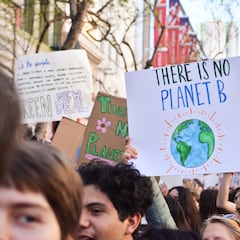Foods that may not exist in 2050
The UN Food and Agriculture Organization forecasts that some basic foods are some of those that are at risk of disappearing based on scientific research.

According to estimates by the United Nations Organization (UN), the world population will reach 10 billion inhabitants, so it would be necessary to guarantee food for all of them on a planet where, due to to climate change, there will be “limited and even dwindling food resources”.
In this sense, food production will have to grow by 70% to guarantee the demand for food at a global level. The scientists pointed out that there is a long list of foods that are at risk of disappearing by the year 2050 as a result of climate change, including some basic necessities. The researchers predict that products such as coffee, bananas, cocoa, honey or wine are some that would have said extinction date, according to science.
The Food and Agriculture Organization of the United Nations (FAO) is already working on various alternatives to avoid shortages and guarantee food at a global level. The insect-based food, the cultivation of microalgae or the creation of artificial meat are just some of the proposals to prevent a lack of food supply. To manage the demand for food and change dietary preferences, the organization emphasized several key points.
Did you get the answer right?
— Food and Agriculture Organization (@FAO) February 10, 2023
Cultivating pulses can help improve soil fertility by fixing nitrogen in the #soil.
Learn more about soil fertility 👇#LovePulses #WorldPulsesDay pic.twitter.com/ynPatAsUcJ
Thus, “appropriate” prices, balancing dietary patterns in high-income countries, managing demand through consumer awareness and education, and international trade seem fundamental to avoid problems with food. In statements collected by ‘Antena 3′, the head of Climate Change at Greenpeace Spain, Pedro Zorrilla, explained the consequences of current climate change.
Related stories
“This assumes that biodiversity in nature cannot adapt, and that the changes in humanity are going to be catastrophic.” As an alternative to animal protein, insects are already part of the food chain, in the case of Spain it is still in the form of snacks or bars made with flour. According to the FAO, they have significant nutritional value given their energy, fat, protein and fiber content, and micronutrients such as zinc, calcium and iron.
The alternative of insects in the food chain
On the other hand, the United Nations argues that raising insects emits considerably less greenhouse gases than most other sources of animal protein, and requires substantially less water than raising livestock. Given their easy transport and breeding, they offer economic opportunities. They can also help improve nutrition and food security, create new livelihood opportunities and support sustainable agricultural systems, according to FAO.

